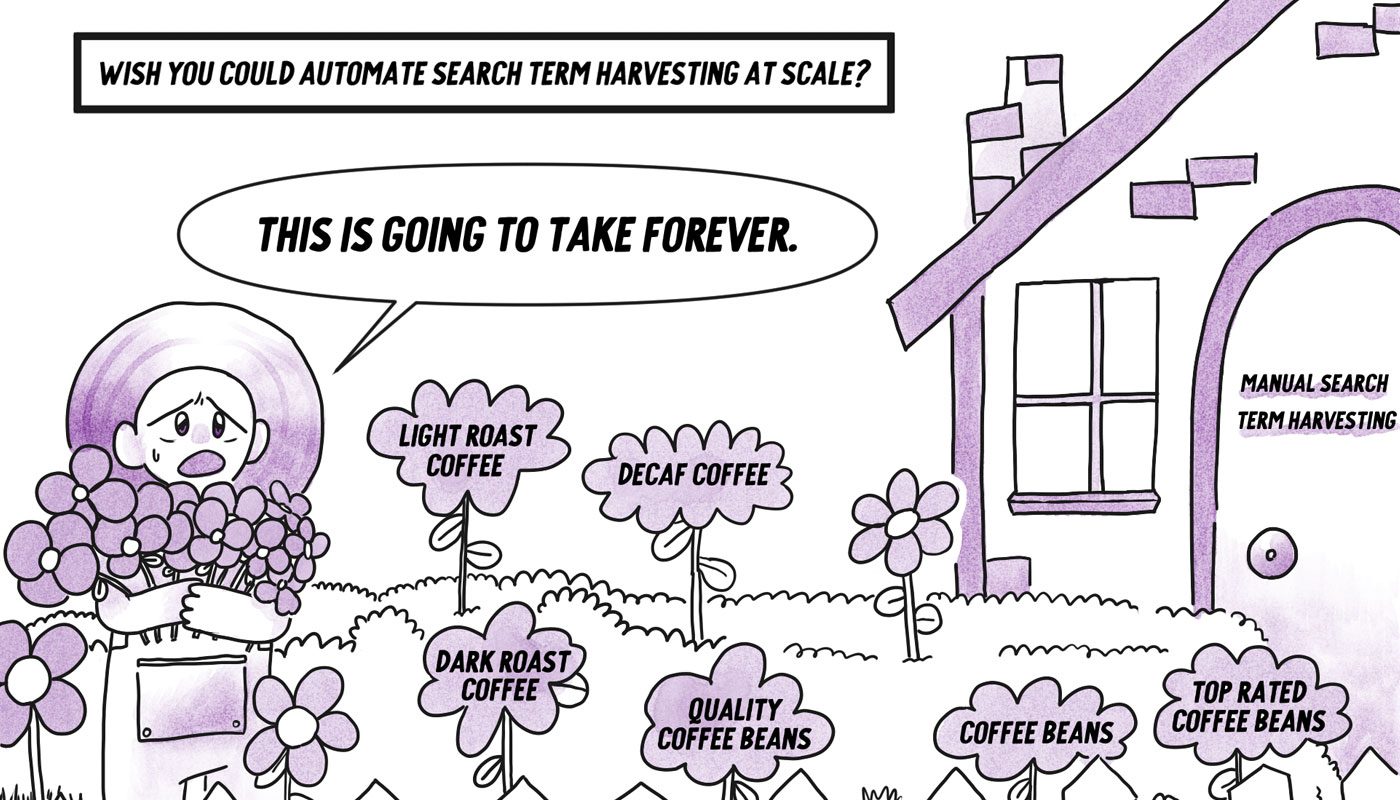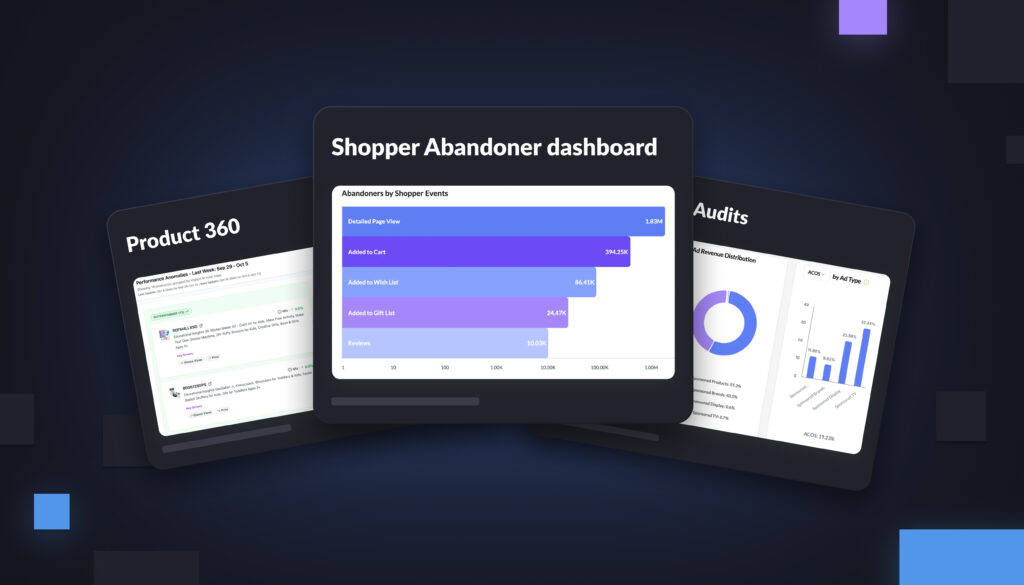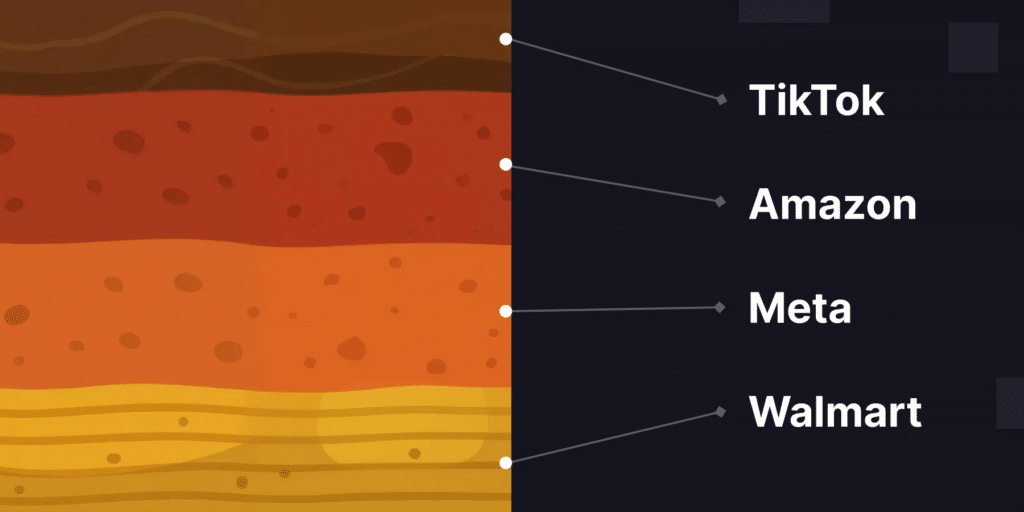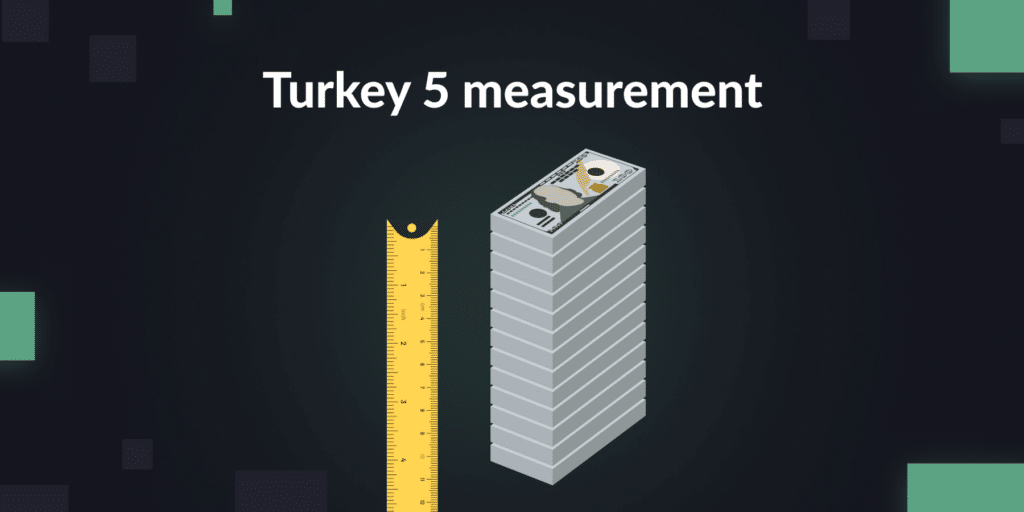We’re doing something a little bit different today. We wanted to look back at some of the most common data mistakes that we have encountered over the past year.
We wanted to show you these mistakes in a more visual way—so we turned them into cartoons. Scroll down to find our 4 common data management mistakes, and learn how to avoid them in 2024.
Each of our recommendations, from currency conversions to segmentations, represent the essential building blocks of your data strategy.
Together, they will speed up your analysis, ensure the accuracy of your insights, and allow you to put those learnings into action.
By the way: If you like these cartoons, feel free to share them with your audience. Just be sure to tag us if you do.
#1. API connections are not enough.
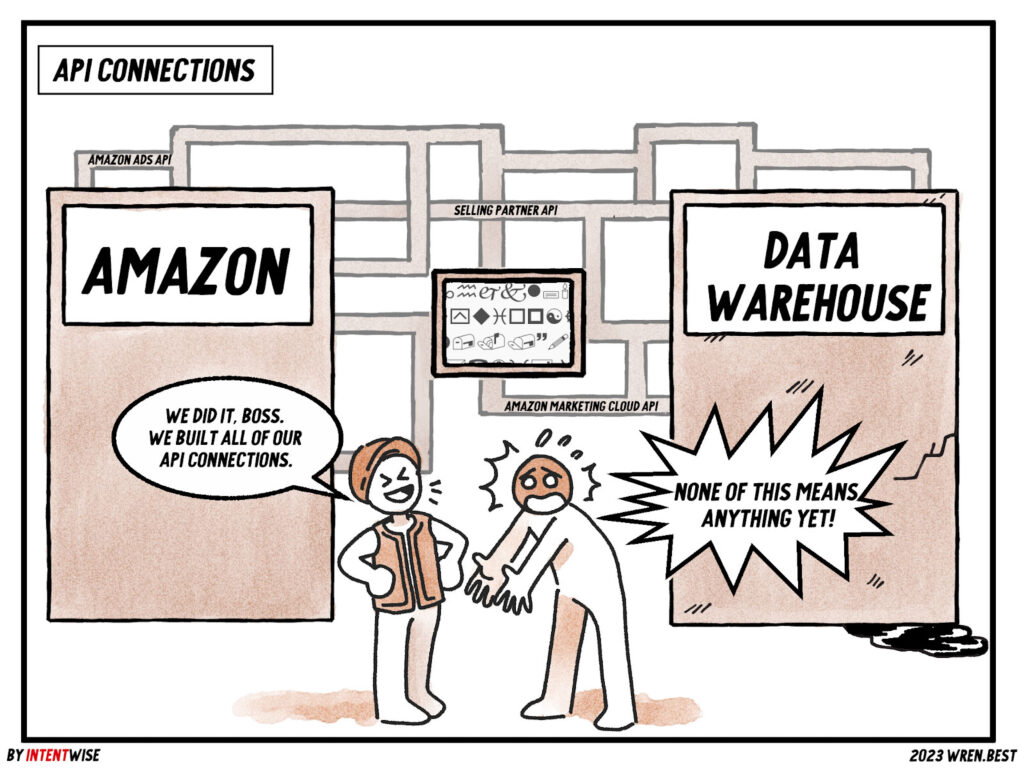
Amazon and Walmart are releasing more APIs than ever. That is exciting, because it means that you can now access far more granular insights than a few years ago.
Because of that, we constantly hear from brands and agencies that are considering building their own API connections with Amazon and Walmart. It’s a big task: A team of engineers working together to build API connections can still take months.
More importantly, those API connections are just step one in a multi-step process.
Once you have your data piped successfully into a data warehouse, you’re going to see a jumble of numbers without a clear structure to them. If you want to make sense of your data, you’ll need to re-organize and enrich it. More on that in a second.
(For more, read our blog post about why API connections are not enough.)
#2. Don’t forget enrichments.
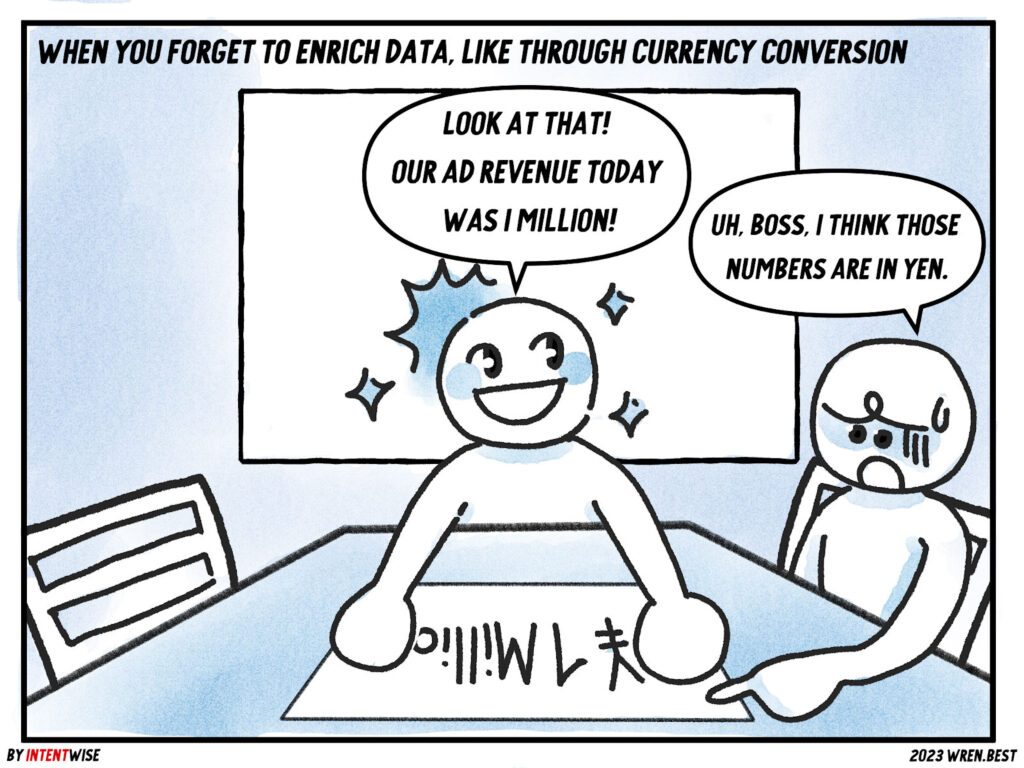
Getting your data from Amazon is a time-consuming task. Whatever method you choose—via bulk files or via API—is going to take a lot of work.
So it’s tempting to celebrate the moment you finally download all of your data. But you should not stop there. When you first get your data, you need to organize it.
That means applying what we at Intentwise like to call enrichments. Enrichments include automatic currency conversions, segmenting your performance by brand vs. non-brand or by sub-brand, and forging connections between various reports.
Without enrichments, your data isn’t going to make much sense. You won’t be able to identify the most important signals at a glance.
(For more on how to organize your data, read our resource hub for building a data strategy.)
#3. Segment, segment, segment.
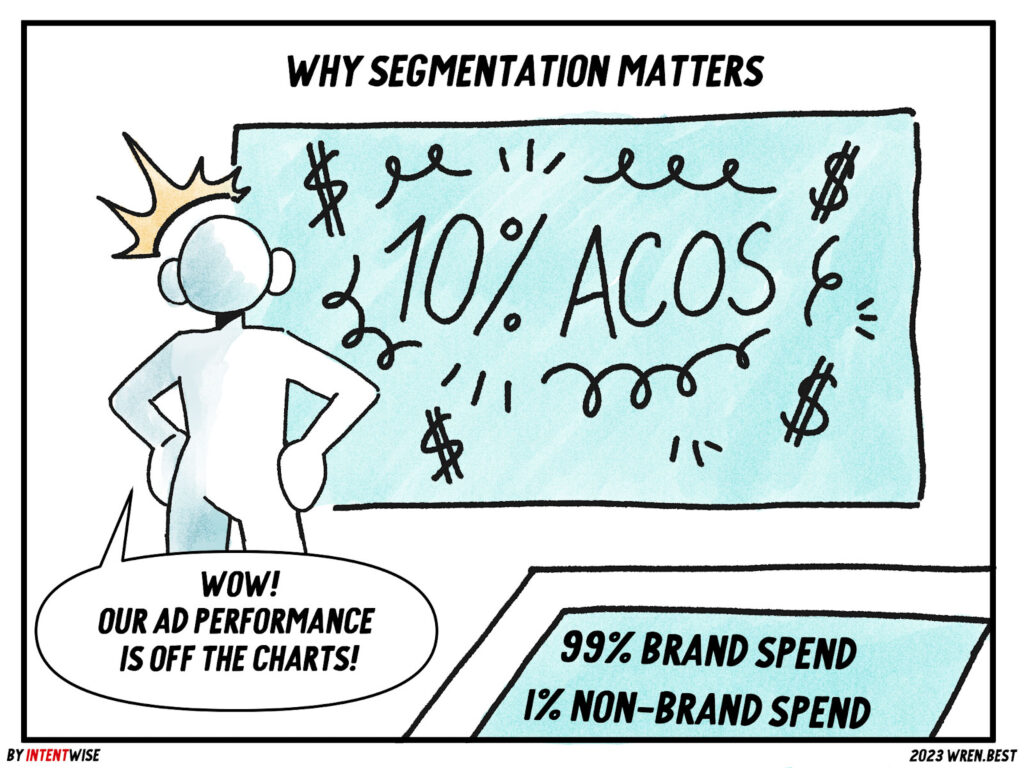
Let’s drill down on one of the points above. If you want to protect yourself against misleading insights, you need to segment out your performance data.
Let’s take the example of branded vs. non-branded segmentation.
Inevitably, your branded search terms are going to have a superior ACOS to your non-branded search terms. So if you run a predominantly non-branded campaign, and you forget to negate out the branded terms, you’re going to accidentally inflate your performance.
A failed non-branded campaign might, misleadingly, look pretty successful if you don’t segment out your branded terms.
Be careful: Because of broad-match errors, branded keywords can slip into your non-brand campaigns by accident. Here’s one common way this happens—and how to avoid it.
#4. Avoid harvesting search terms by hand.
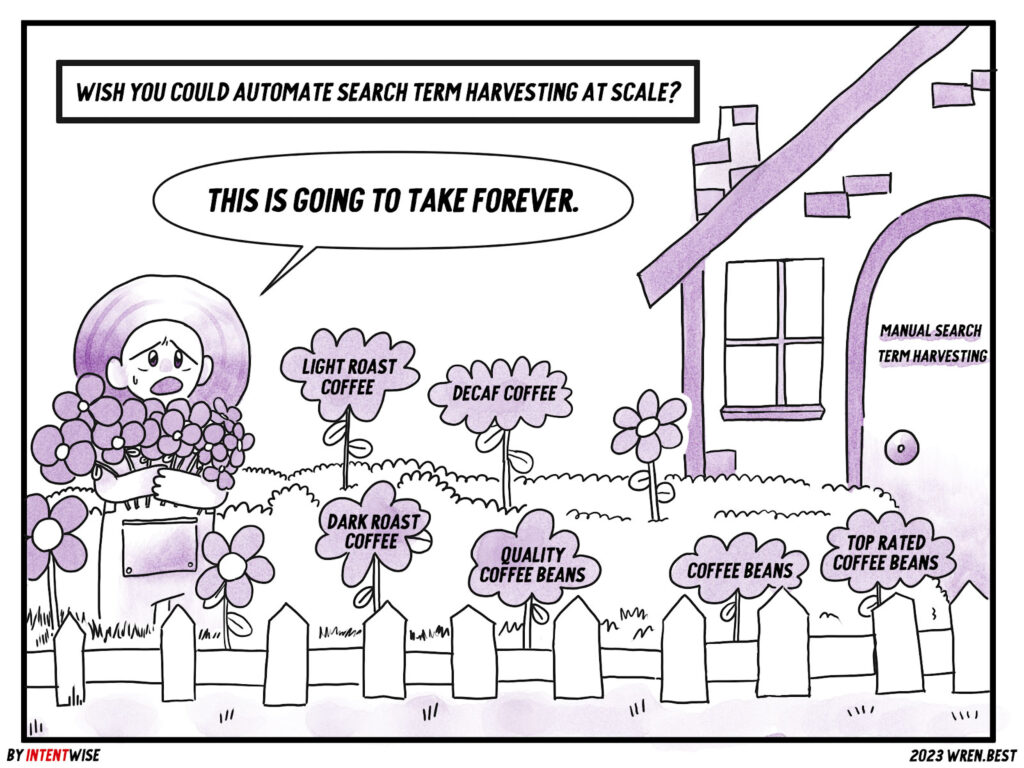
In any given ad campaign, you will be targeting dozens or hundreds of keywords. Therefore, you might have hundreds or even thousands of matching search terms. Many clients at Intentwise have millions of search terms in their accounts.
That poses a major scale problem. If you want to turn your high-performing search into keywords in manual campaigns, you’re going to waste dozens of hours sifting through your search term reports by hand.
But there’s an easier way: Write automated rules that can identify successful search terms, and automatically convert them into keywords. You won’t have to give your keywords a second thought. (For more, read our explainer on how keyword harvesting at scale works.)
Want to protect yourself against these common data mistakes?
Intentwise Analytics Cloud can solve these data management problems for you.
When you choose Intentwise, we’ll pipeline your data into a warehouse for you.
Then, we automatically convert your currencies, segment out your branded vs. non-branded performance, and connect together your reports, so that you can see all your data in one, fast-loading view.
And when you encounter an adjustment you want to make to your campaigns? Execute it instantly through AI or automated rules with the Intentwise Ad Optimizer.

